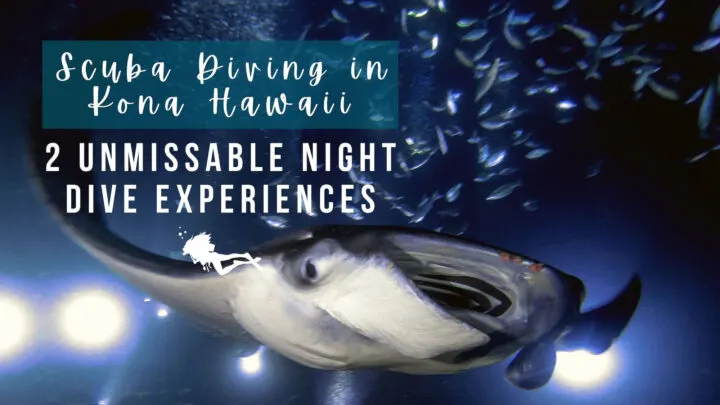With healthy reefs, sweeping volcanic topography, and a rainbow of marine life, there is so much to see in this Pacific paradise. If you’re a manta lover, Kona Hawaii is probably already on your diving radar for the infamous manta ray night dives. But did you also know you could take on an otherworldly blackwater dive to experience alien-like underwater life?
Read on to explore the marine life of Kona Hawaii, find out who to dive with, and to learn all the details of the two unmissable night dives that the west coast of the Big Island has to offer.
Kona Hawaii: The Basics
Kona is an immensely popular dive location stretching across a large area of the west coast of the Big Island, Hawaii. It’s known for stunning reefs, thriving marine life, and incredible unique night dive encounters with the island’s resident manta ray population.
The town of Kailua-Kona is a vibrant tourist destination, making this a great choice for trips with non-divers, too. As well as the underwater wonders, the local area is also famous for its coffee. You can expect to explore dense jungles, black sand volcanic beaches, and coffee plantations in between thrilling dives.
Kona has its own international airport, Ellison Onizuka Kona International Airport (KOA), which is conveniently located for visiting the region. However, from some long haul destinations you may have to fly into Honolulu Airport (HNL) on O’ahu and take one of the frequent inter-island flights from Honolulu to Kona Hawaii.
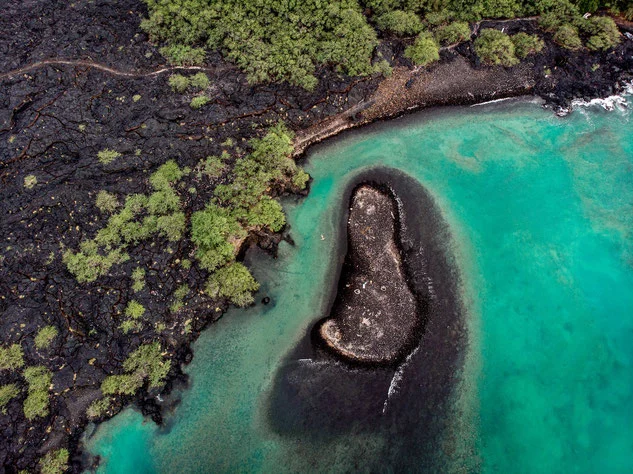
What marine life can I see in Kona Hawaii?
Diving Kona Hawaii’s sites will expose you to a huge variety of marine flora and fauna. The local reefs are teeming with familiar fishy faces, such as butterflyfish, snappers, trumpetfish, goatfish, parrotfish and numerous species of wrasse. Look closely for moray eels and octopus, too.
Be sure to keep your eyes out for the Hawaiian state fish, the Humuhumunukunukuāpuaʻa. The Hawaiian word for this reef triggerfish loosely translates to “triggerfish with a snout like a pig”.
If you have your heart set on bigger reef residents, Kona won’t disappoint. Hawaiian green sea turtles are regular visitors as well as smaller hawksbill turtles, and spotted eagle rays commonly cruise by. For marine mammal lovers, spinner and spotted dolphins can also be seen as well as humpback whales, although you’re more likely to encounter them from the boat than underwater.
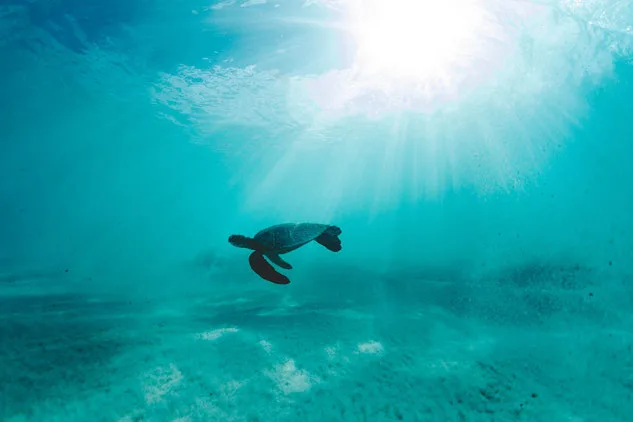
If you’re into your elasmobranchs you’re in the right place. White tip reef sharks and grey reef sharks inhabit some of the reefs in the area, and you may even be lucky enough to encounter a tiger shark.
The crowning creature which draws divers to the area is of course the Reef Manta Ray (Mobula alfredi). These gentle giants can grow up to an impressive wingspan of 5m (16ft), and there is a thriving local population. In fact, over 300 individual manta rays have been identified in the Kona area since 1991.
Manta Ray Night Dive Kona Hawaii
The most unique way to see Kona’s manta rays, and the dive the area is best known for, is of course the manta ray night dive. Divers gather kneeling or sitting on the sandy bottom and shine their torches up into the water column. This attracts plankton, which in turn attracts the manta rays for their evening meal.
With the dive lights illuminating their unique underbellies it’s almost as if they’re performing on an underwater stage. Their loops and twirls are almost like a ballet, and it’s definitely a dance you won’t forget any time soon.
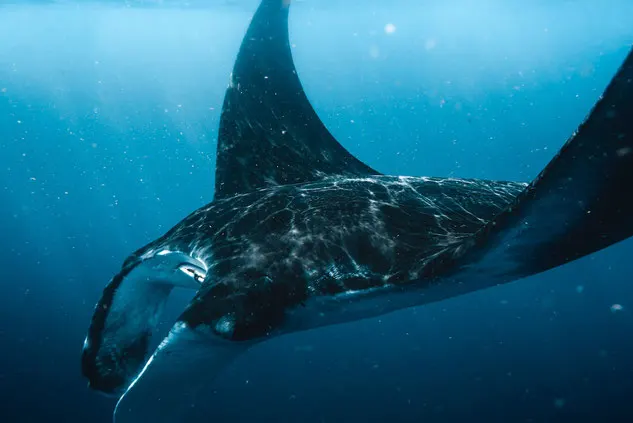
How deep is the manta ray night dive?
The manta night dives generally take place in shallow dive sites, at around 10m (35 ft). The most common site is Manta Heaven, also known as Garden Eel Cove, which is just offshore from the airport.
Many operators run the manta night dive as a two tank trip, with the first dive taking place during twilight. This is an exciting time to dive, as it’s when the day dwellers are taking shelter and nocturnal creatures are coming out. You can then spend your surface interval taking in the sunset before the night dive.
Is diving with manta rays safe?
Guidelines have been agreed between the local operators to ensure the manta night dives are safe for both the animals and the divers. This includes divers remaining on the bottom and snorkelers staying at the surface (without freediving down) to allow the mantas space to move freely in the water column. There is also a strict no touching policy, as touching the mantas can disturb the delicate coating of their skin and introduce harmful bacteria.
Remember that as with any scuba diving experience these are wild animals, therefore sightings can’t be guaranteed. However, many operators will allow you to return for free (or at a discounted rate) if you don’t see mantas on your dive. Planning your dive early in your trip will give you the freedom to go a second time if you miss out on a first encounter.
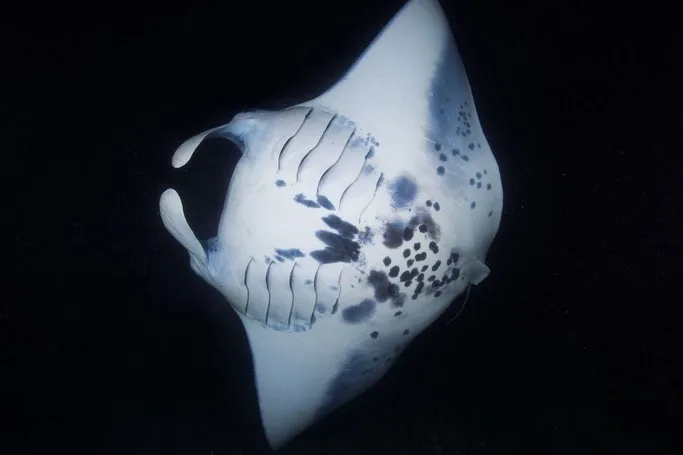
How much is the manta ray night dive?
If you choose to do just a one tank trip, you can expect to pay around $149. The more common two tank trips can vary from $189 to $229, but quoted prices often exclude tax and equipment rental, and tipping is also expected in the area.
Non-divers can also join your adventure by snorkelling at the surface, making this a fantastic activity if you’re travelling within a larger group. Snorkel experiences may be cheaper depending on the operator.
Blackwater Diving in Kona Hawaii
People often compare scuba diving to floating in space, but we truly believe that blackwater diving is the closest we can get to that experience without leaving our blue planet. Blackwater scuba dives are like no night dive you’ve ever done before. You’ll plunge yourself into an alien world, where you’ll encounter the magical, the mystical, and the downright weird.
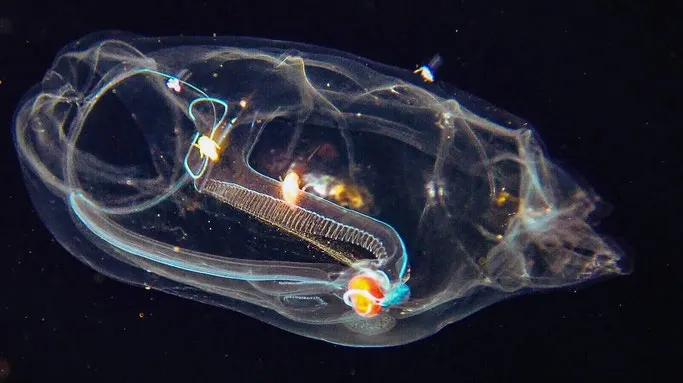
What is blackwater diving?
A blackwater dive is a night dive over incredibly deep water, and divers are tethered to lines dropped from the boat. These lines usually bottom out at 15m (50 ft), but divers often stay even shallower than this. There is no need to stay deep as the organisms will come to you.
Just like the manta night dive, your dive lights attract plankton which in turn draws in some incredible marine life. Blackwater sites are usually locations with pelagic (open ocean) life, and you will encounter deep-dwelling creatures on their nightly vertical migration to feed at the surface.
Kona Hawaii is one of the best spots for blackwater diving due to the island’s topography. The volcanic nature of the island means that there is access to extremely deep water relatively close to shore.
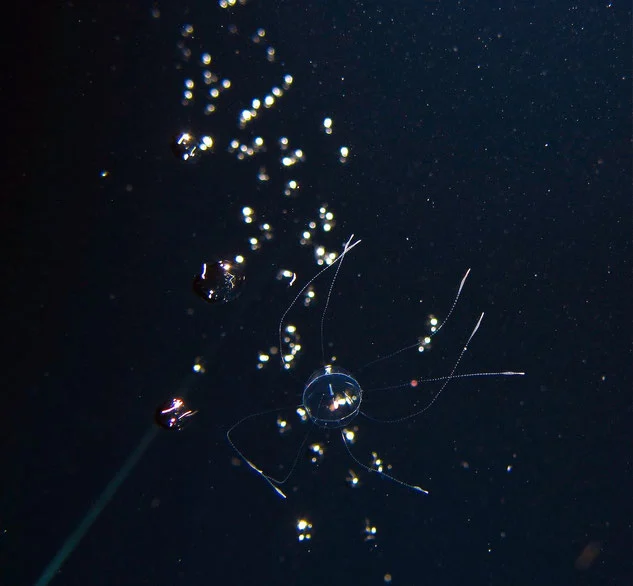
What can I see on a blackwater dive?
The organisms on a blackwater dive will be like nothing you’ve ever seen before. Squid, octopus, larval-stage creatures (such as flounders), siphonophores, and ctenophores are all amongst the possible encounters. If you’re incredibly lucky, you may bump into hunting dolphins or pelagic sharks.
All of these wriggly, shimmering, glowing creatures make for a photographer’s playground. Diving with a GoPro might not suffice here though – strobes are needed for truly capturing these shots, so capturing this dive is more suited to intermediate-advanced photographers.
Equally, you may need to have slightly more advanced dive skills for this experience. Some operators will require you to have an Advanced Open Water certification at minimum, or may ask you to do another (non blackwater) night dive with them first to gauge your comfort level.
How much is a blackwater dive in Kona?
Prices vary from $199 to $229, excluding tax and equipment rental. Tipping is also expected in the area.
Who should I dive with in Kona Hawaii?
The community in our Girls that Scuba Facebook Group has a number of favourite providers in the local area. Aquatic Life Divers are a newer operator in the area who come highly recommended.
We love a woman-owned dive operation and so do our members, so Kona Diving Company is a firm community favourite. However, they don’t offer the aforementioned blackwater dives.
Other dive shops which are regularly recommended in the group are Kona Honu Divers, Jack’s Diving Locker, and Big Island Divers.
Have you experienced these magical dives? Let us know your favourite Kona Hawaii dive memory in the comments below, and share this article with a buddy who needs to add these to their dive log!

